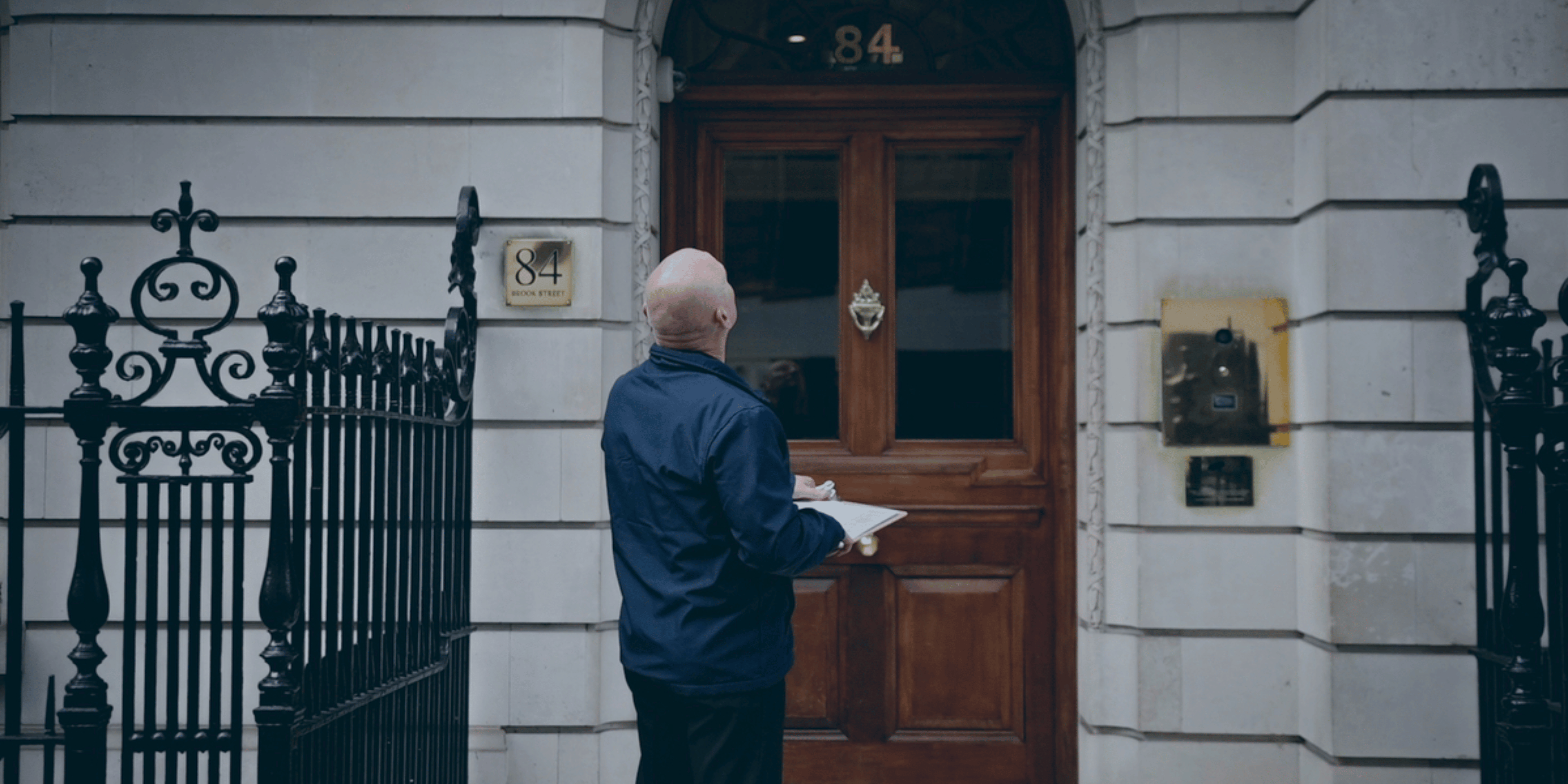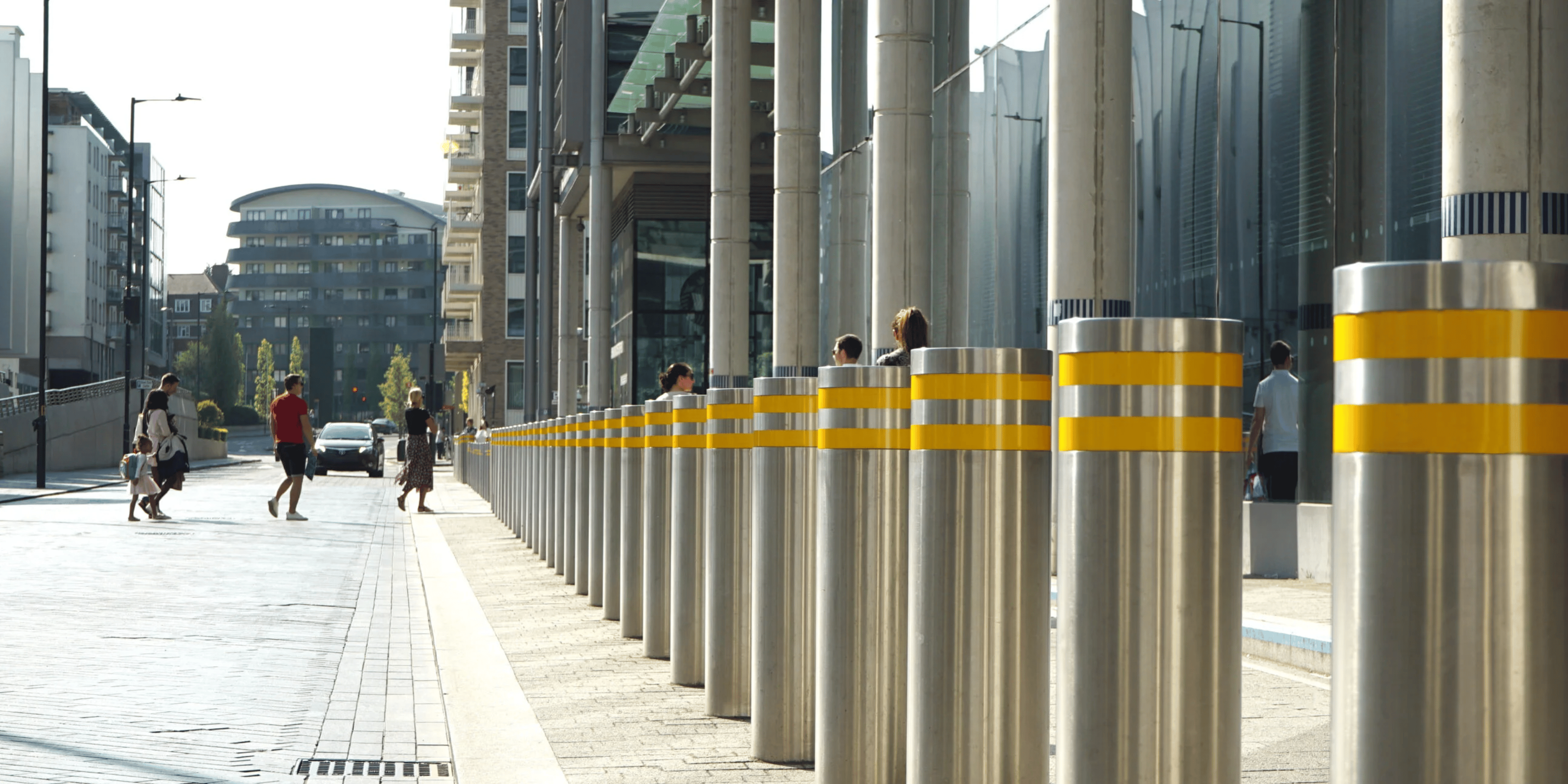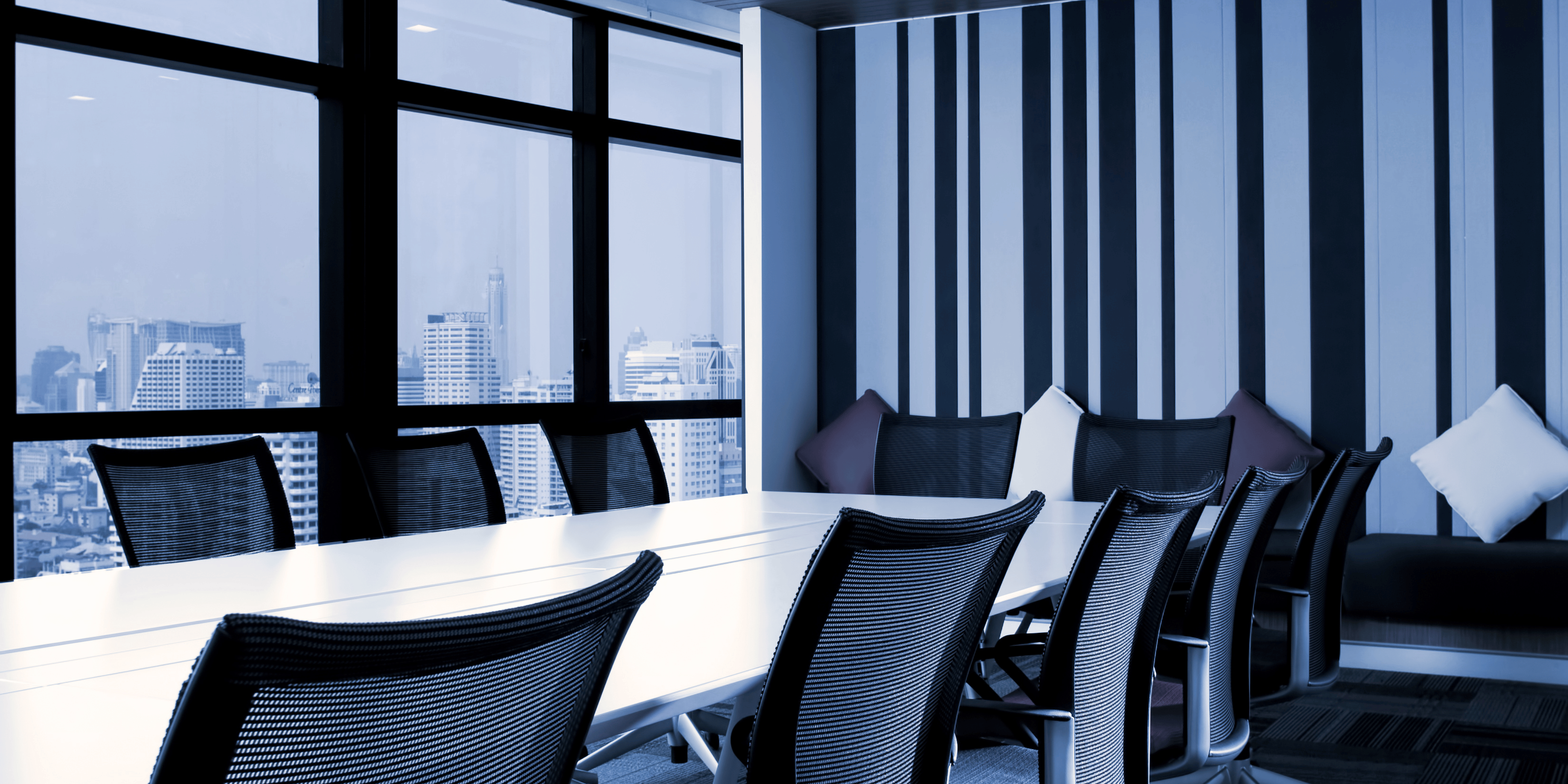
Best Practices for Commercial Security Camera Systems on Construction Sites
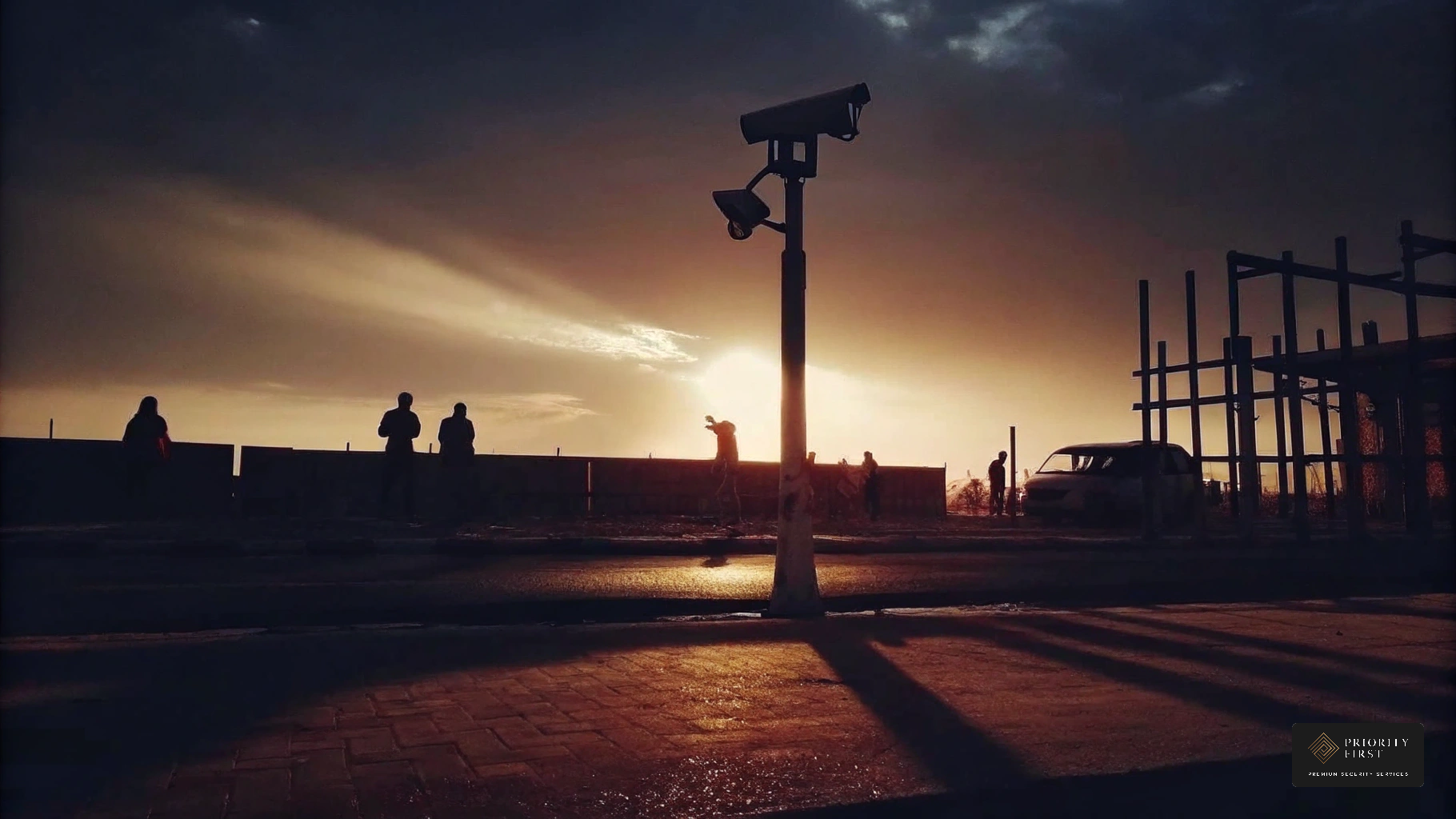
Overview
Best practises for commercial security camera systems on construction sites underscore the importance of:
- Selecting appropriate camera types
- Strategic installation
- Establishing continuous monitoring and maintenance protocols
Understanding camera functionalities and ensuring effective placement to eliminate blind spots are critical for enhancing site safety and operational efficiency. The reality is that regular maintenance can significantly impact these outcomes, as evidenced by successful real-world applications and statistics on theft reduction. Ignoring these practises can lead to:
- Financial losses
- Operational disruptions
- Reputational damage
In practise, investing in robust security measures is not merely an expense; it is a vital component of business resilience.
Introduction
The safety and security of construction sites have become increasingly critical, as incidents of theft and safety breaches continue to escalate. This reality poses significant challenges for businesses, particularly in terms of operational efficiency and site protection. Ignoring these risks can lead to substantial financial losses, operational disruptions, and reputational damage.
In practise, the right commercial security camera systems can serve as a vital solution, enabling construction supervisors to enhance site protection effectively. This article explores best practises for:
- Selecting security camera systems
- Installing security camera systems
- Maintaining security camera systems
It addresses common challenges while highlighting key features that ensure effective surveillance.
How can construction managers navigate the complexities of security camera systems to foster a safer working environment while maximising their investment?
Understand the Fundamentals of Commercial Security Camera Systems
Commercial security camera systems encompass several essential components, including recording devices and monitoring systems. Understanding the range of available devices—such as fixed, PTZ (pan-tilt-zoom), and thermal imaging—is vital for selecting the appropriate for construction sites. Each type of commercial security camera system serves specific functions:
- Fixed devices offer consistent coverage.
- PTZ units facilitate dynamic monitoring of expansive areas.
- Thermal imaging can identify heat signatures, making these commercial security camera systems invaluable for nighttime operations.
Familiarity with recording options, such as DVRs (Digital Video Recorders) and NVRs (Network Video Recorders), is crucial for determining how footage from commercial security camera systems will be stored and accessed. NVRs are often preferred for commercial security camera systems in IP surveillance due to their ability to manage higher resolutions and provide remote access.
Key specifications like resolution, frame rate, and field of view significantly impact surveillance effectiveness. High-resolution devices enhance image clarity, allowing for better recognition of potential threats. A frame rate of at least 15 frames per second is advisable for smooth video playback, while a wide field of view reduces blind spots, ensuring comprehensive coverage of critical areas.
Integrating commercial security camera systems with additional protective measures, such as alarms and access control, further bolsters site safety. Priority First focuses on merging its CCTV monitoring services with existing commercial security camera systems, ensuring minimal disruption during implementation while enhancing your current configuration with technical support and ongoing improvements. For instance, a well-organised system can trigger alarms based on motion detected by cameras, enabling swift responses to potential breaches. The deployment of commercial security camera systems at Prologis led to a 67% reduction in health and safety near misses and incidents over a 12-month period, underscoring the effectiveness of these integrations.
Real-world examples underscore the value of these integrations. At the University of Leeds, a tailored setup of commercial security camera systems was established, providing intelligent protection and future-proofing against safety challenges. This system not only enhanced safety but also optimised operations, highlighting the importance of customised commercial security camera systems as protective solutions. As IT expert Mansoor Mansoor noted, "Essential attributes to consider for construction location surveillance devices are weather resistance, night vision, and high-resolution imaging, ensuring reliable monitoring in various conditions."
Understanding the different types of commercial security camera systems and their functionalities is essential for construction supervisors. This knowledge enables the selection of the most appropriate commercial security camera systems, which ultimately leads to improved safety and operational efficiency on-site. Moreover, it is crucial to acknowledge potential challenges in selecting and implementing surveillance equipment, such as underestimating the importance of integration with existing protective measures or neglecting the unique requirements of the construction environment.

Select Appropriate Camera Types and Features for Construction Sites
When selecting , durability, weather resistance, and low-light performance are critical. Cameras with high Ingress Protection (IP) ratings are essential for outdoor applications, as they are engineered to endure harsh weather conditions, ensuring reliable operation in rain, snow, and extreme temperatures. Features such as motion detection, night vision, and remote access capabilities significantly enhance the effectiveness of surveillance systems.
For expansive areas, PTZ (pan-tilt-zoom) devices offer distinct advantages, allowing for dynamic monitoring, while fixed units can be strategically positioned to cover entry points and protect high-value assets. Incorporating AI-driven features, such as automated threat detection and behavioural analysis, provides real-time alerts and insights into suspicious activities, thereby bolstering overall security. The necessity of weather-resistant devices cannot be overstated; they guarantee continuous monitoring and reduce maintenance costs associated with equipment failure due to environmental factors.
Priority First's CCTV monitoring service operates 24/7, ensuring that your construction site remains under constant surveillance and enabling immediate responses to any suspicious activities. Investing in robust commercial security camera systems tailored for construction environments, along with Priority First's integration services that enhance system functionality, is vital for safeguarding assets and adhering to project timelines.
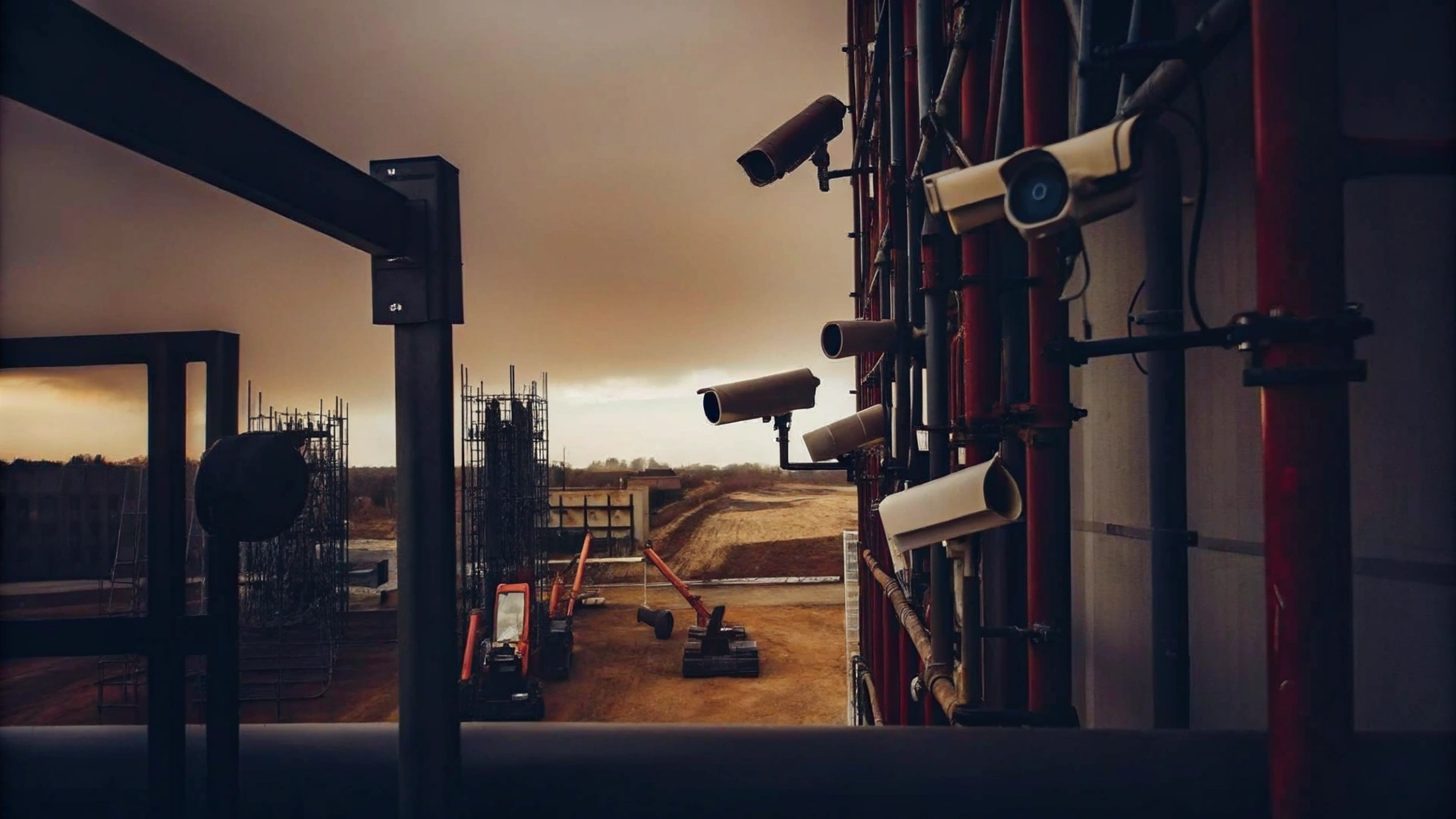
Implement Effective Installation Strategies for Security Cameras
Effective installation of commercial security camera systems is crucial for safeguarding assets and requires meticulous planning and strategic placement. A comprehensive site assessment is essential to identify vulnerable areas for commercial security camera systems, including:
- Entry points
- Storage zones
- High-traffic locations
By positioning commercial security camera systems to eliminate blind spots and maximise coverage, ideally at a height that discourages tampering, businesses can enhance their security posture. The angle of view of each device must be considered, ensuring it remains unobstructed by equipment or materials. Furthermore, utilising weatherproof cables and secure connexions protects wiring and connectivity from damage.
After installation, conducting a testing phase is vital to make necessary adjustments based on real-world performance, ensuring optimal operation. Frequent assessments of equipment positions can further improve safety by adapting to changing location circumstances and weaknesses. The reality is that neglecting these measures can lead to significant financial, operational, and reputational risks. Priority First offers pragmatic solutions, ensuring businesses are equipped to face these challenges head-on. Investing in is not merely an expense; it is a commitment to business continuity.

Establish Continuous Monitoring and Maintenance Protocols
To ensure the efficiency of commercial security camera systems on construction sites, a regular monitoring and maintenance plan is essential. Consistent examination of footage from commercial security camera systems plays a critical role in identifying coverage gaps and potential functionality issues. Implementing software updates for commercial security camera systems not only enhances security features but also addresses any vulnerabilities that may arise. Physical examinations of commercial security camera systems must be conducted to ensure they are clean, correctly aligned, and free from obstructions, which is vital for optimal performance.
Training personnel on how to respond to alerts and incidents captured by the commercial security camera systems is equally important. This preparation enables the protection team to act swiftly and effectively when threats are detected. By prioritising ongoing monitoring and maintenance, construction areas can significantly mitigate risks and enhance overall security with commercial security camera systems.
For instance, a maintenance schedule could encompass:
- Weekly checks for camera alignment and cleanliness
- Monthly software updates
- Quarterly comprehensive system reviews
Such proactive measures not only improve the efficiency of commercial security camera systems but also contribute to a safer working environment. With construction theft leading to estimated losses of £400 million to £1 billion each year, the necessity for , including commercial security camera systems, becomes clear.
Priority First offers comprehensive commercial security camera systems that provide around-the-clock surveillance, ensuring your construction site is always protected. Furthermore, our risk management and consulting services assist in creating customised strategies to improve operational efficiency and guarantee thorough protection against emerging threats. Maintaining a running inventory of materials aids in tracking equipment and materials, further enhancing security.
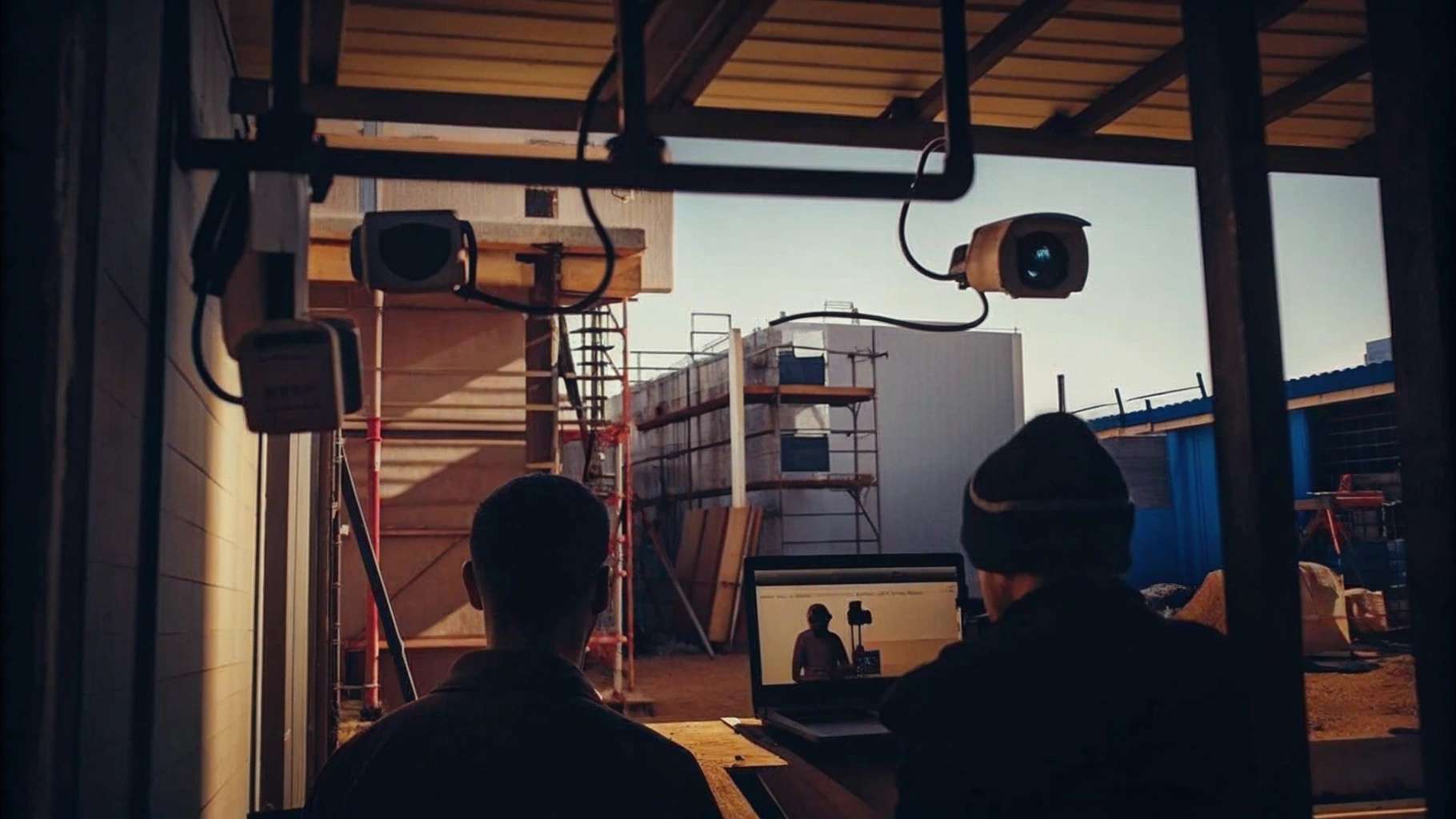
Conclusion
Understanding and implementing best practises for commercial security camera systems on construction sites is essential for enhancing safety and operational efficiency. Choosing the right types of cameras, integrating them with existing security measures, and ensuring proper installation and maintenance enables construction supervisors to establish a robust surveillance strategy that effectively mitigates risks and protects valuable assets.
The reality is that selecting durable, weather-resistant cameras capable of performing under various conditions is critical. Moreover, integrating advanced features such as motion detection and AI-driven analytics significantly enhances these systems' effectiveness. Real-world examples demonstrate the tangible benefits of tailored security solutions, illustrating how well-implemented camera systems can lead to substantial reductions in incidents and improved overall site safety.
The lesson is clear: investing in comprehensive commercial security camera systems is not merely a precaution; it is a strategic commitment to safeguarding construction sites against theft, vandalism, and other potential threats. By prioritising ongoing monitoring, maintenance, and training, construction teams can ensure their surveillance systems remain effective and responsive to emerging challenges. Embracing these best practises will not only enhance security but also contribute to a more efficient and productive work environment, underscoring the vital role of effective surveillance in the construction industry.
Frequently Asked Questions
What are the main components of commercial security camera systems?
Commercial security camera systems consist of recording devices, monitoring systems, and various types of cameras, including fixed, PTZ (pan-tilt-zoom), and thermal imaging.
What types of commercial security cameras are available, and what are their functions?
The main types of commercial security cameras include: - Fixed devices, which provide consistent coverage. - PTZ units, which allow dynamic monitoring of large areas. - Thermal imaging cameras, which can detect heat signatures, making them useful for nighttime operations.
What are DVRs and NVRs, and how do they differ?
DVRs (Digital Video Recorders) and NVRs (Network Video Recorders) are recording options for storing and accessing footage from security camera systems. NVRs are preferred for IP surveillance as they can manage higher resolutions and provide remote access.
What key specifications should be considered when selecting commercial security camera systems?
Important specifications include resolution, frame rate, and field of view. High-resolution devices improve image clarity, a frame rate of at least 15 frames per second is recommended for smooth playback, and a wide field of view reduces blind spots for comprehensive area coverage.
How can commercial security camera systems be integrated with other safety measures?
Integrating security camera systems with alarms and access control enhances site safety. For example, a well-organised system can trigger alarms based on motion detected by cameras, allowing for quick responses to potential breaches.
What impact did the deployment of commercial security camera systems have at Prologis?
The implementation of commercial security camera systems at Prologis resulted in a 67% reduction in health and safety near misses and incidents over a 12-month period.
What are some essential attributes to consider for surveillance devices in construction environments?
Key attributes include weather resistance, night vision, and high-resolution imaging to ensure reliable monitoring under various conditions.
Why is it important for construction supervisors to understand commercial security camera systems?
Understanding the different types and functionalities of commercial security camera systems enables construction supervisors to select the most appropriate systems, leading to improved safety and operational efficiency on-site.
What challenges might arise when selecting and implementing surveillance equipment?
Potential challenges include underestimating the importance of integrating with existing protective measures and neglecting the unique requirements of the construction environment.


